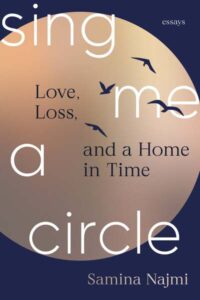The recent documentary, The Sea is Our Home immerses viewers in the vibrant yet precarious world of the Bajau Laut, whose stilt houses rise above the turquoise waters of Sabah’s east coast. While this film is centered on the sea nomads of Malaysia, the Bajau Laut can also be found in aquatic settlements across coastal Philippines and Indonesia.
Mani Rao, who counts acclaimed translations of Kalidasa and Bhagavad Gita from Sanskrit among her accomplishments, has long been a quiet force in South Asian poetry circles. Her latest extensive collection of original poems, So That You Know, is a work of poise and clarity of thought. The poems engage with diverse themes and resist straightjacketing, yet broadly they explore conversations, relationships, nature, life and death, and mythologies that flow into each other.
While Taiwan continues to be in the news due to its geopolitical ambiguities, a lesser-known aspect of its short recorded history is the establishment of a Dutch colony in its southern part in the 17th century. A Tale of Three Tribes in Dutch Formosa describes this Dutch settlement and its interactions with local indigenous people and its heroic but futile resistance against invading Chinese loyalist warlord Koxinga.
Today’s international system is made up of states: Territorial entities with defined borders, with exclusive control within those borders, diplomatic recognition by other states outside of them and usually (though not always) tied to some idea of the “nation”. But how many states have existed throughout history, such as during the 19th century? Some early counts put the number at just a few dozen—a measure that international relations professors Charles R. Butcher and Ryan D Griffiths thought was far too low, missing polities throughout the non-Western world.
At the end of the Second World War, the United States and the Soviet Union combed the intelligence agencies and scientific institutes of their defeated enemies to find and enlist skilled personnel to, in author Stephen Mercado’s words, “work in the shadows of the Cold War.” While much has been written about the postwar recruitment of German spies and scientists, Mercado’s new book, Japanese Spy Gear and Special Weapons, focuses on Japan’s Noborito Research Institute—its origins, its work for Imperial Japan during the war, and America’s use of the Noborito’s veterans in the early Cold War years.
“There are only two limitless things in this world: the human soul and its sins.” This grim declaration captures the essence of Sultan Raev’s Castigation, a dense and allegorical novel that draws as much from biblical prophecy as it does from the tragedies of Shakespeare and the myths of antiquity.
There is no obvious throughline that runs through this new collection of Osamu Dazai stories; only a series of Dostoevskian protagonists—young men who smoke too many cigarettes, cower in social situations, and who are consumed by deep insecurity. Written in the second half of the 1930s, Retrograde has been arranged and translated by Leo Elizabeth Takada, who has previously subtitled the Oscar-winning Japanese film Perfect Days for English audiences.

“All points on a circle are always the same distance from the center.” These exquisite personal essays trace the orbit of Pakistani-American author Samina Najmi as she reflects on events, people, and places that shape her traditional childhood in Pakistan and continue to inspire her as she pursues her dreams of education and travel, enlarging her vision and experience of the world.
Harini Nagendra brings the vibrancy of 1920s India to life in the “Bangalore Detectives Club” series, tightly-plotted mysteries interweaving themes of colonialism, women’s empowerment and the environment. In the latest, Into the Leopard’s Den, her fearless sleuth Kaveri Murthy—now pregnant with her first child—travels to the verdant forests and sprawling coffee plantations of Coorg to investigate a murder.
Set against a variety of conflicts from the past century, author and academic Sunny Singh pays tribute to the courage and strength of victim-survivors of war, whose voices mostly go unheard because the victors control the narrative.

You must be logged in to post a comment.